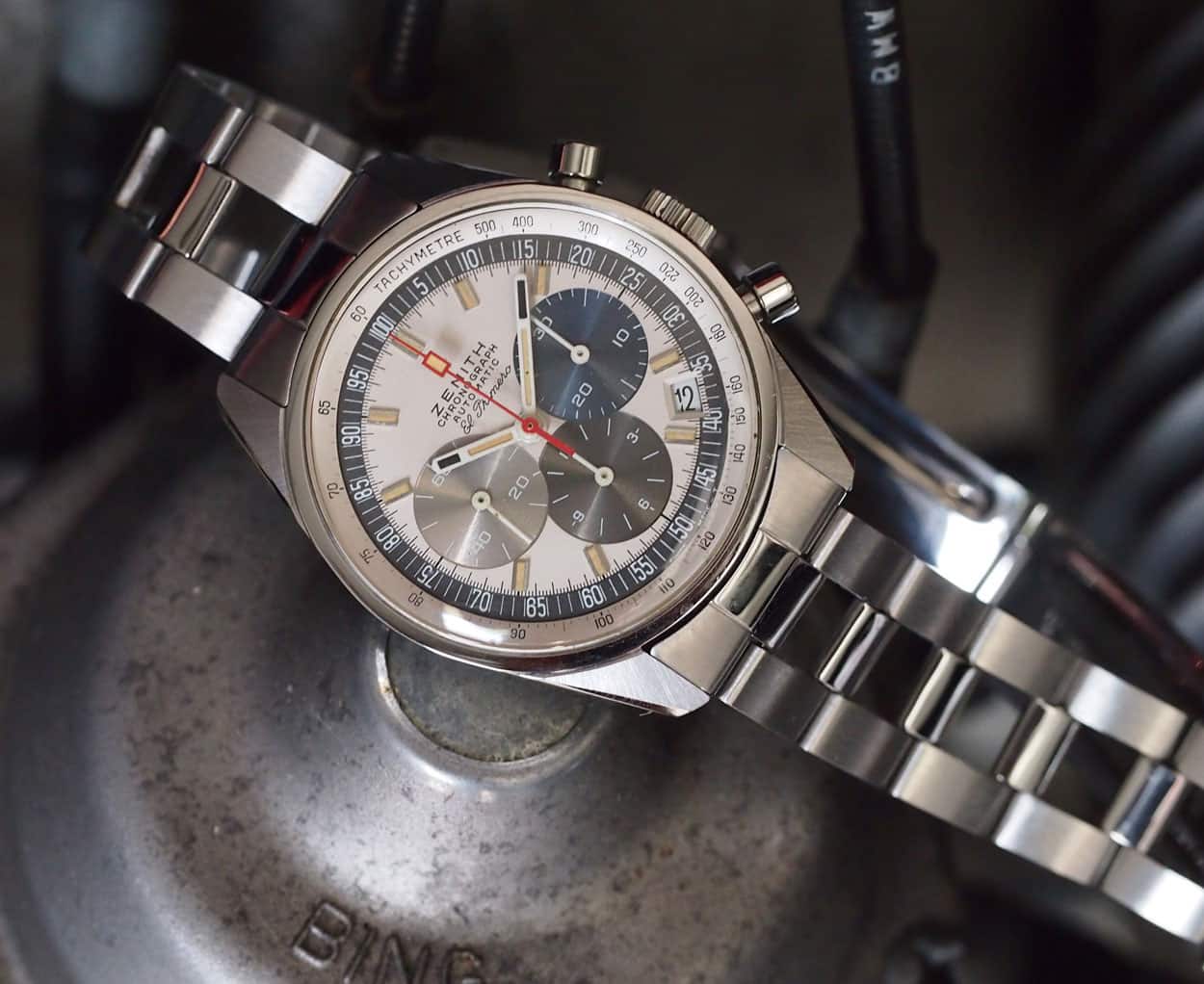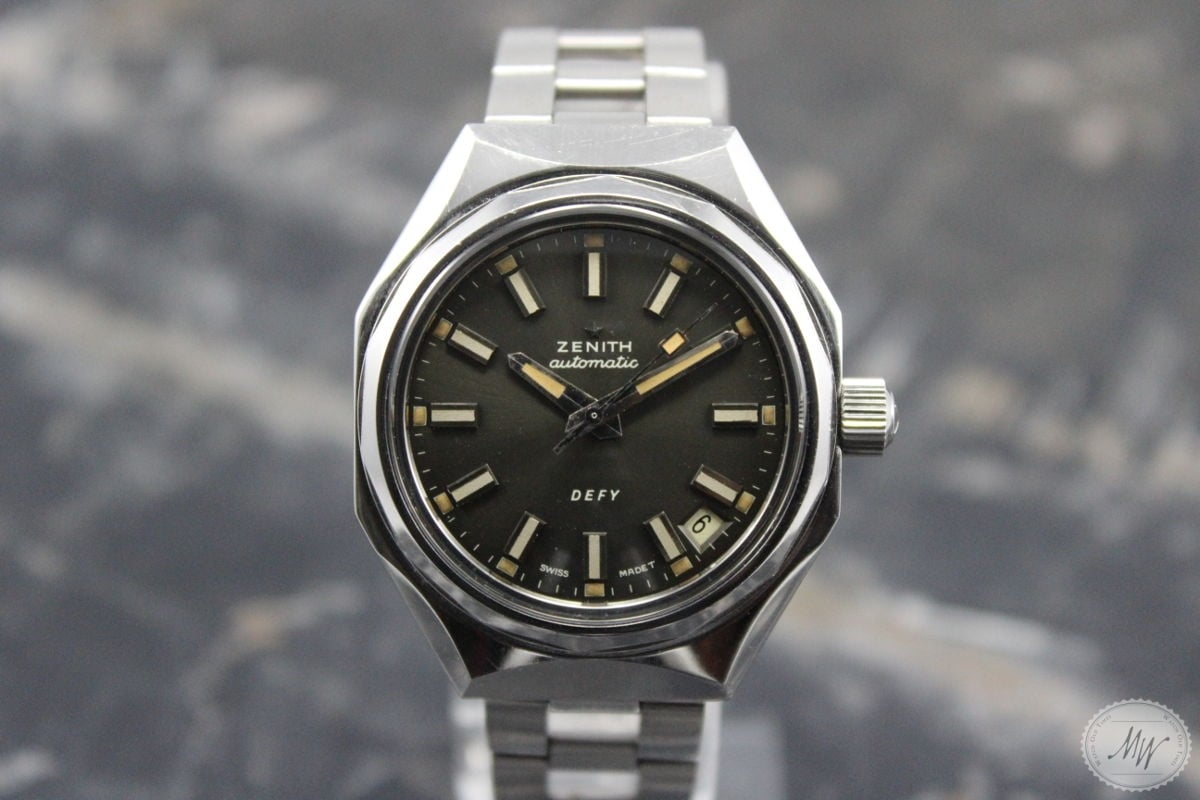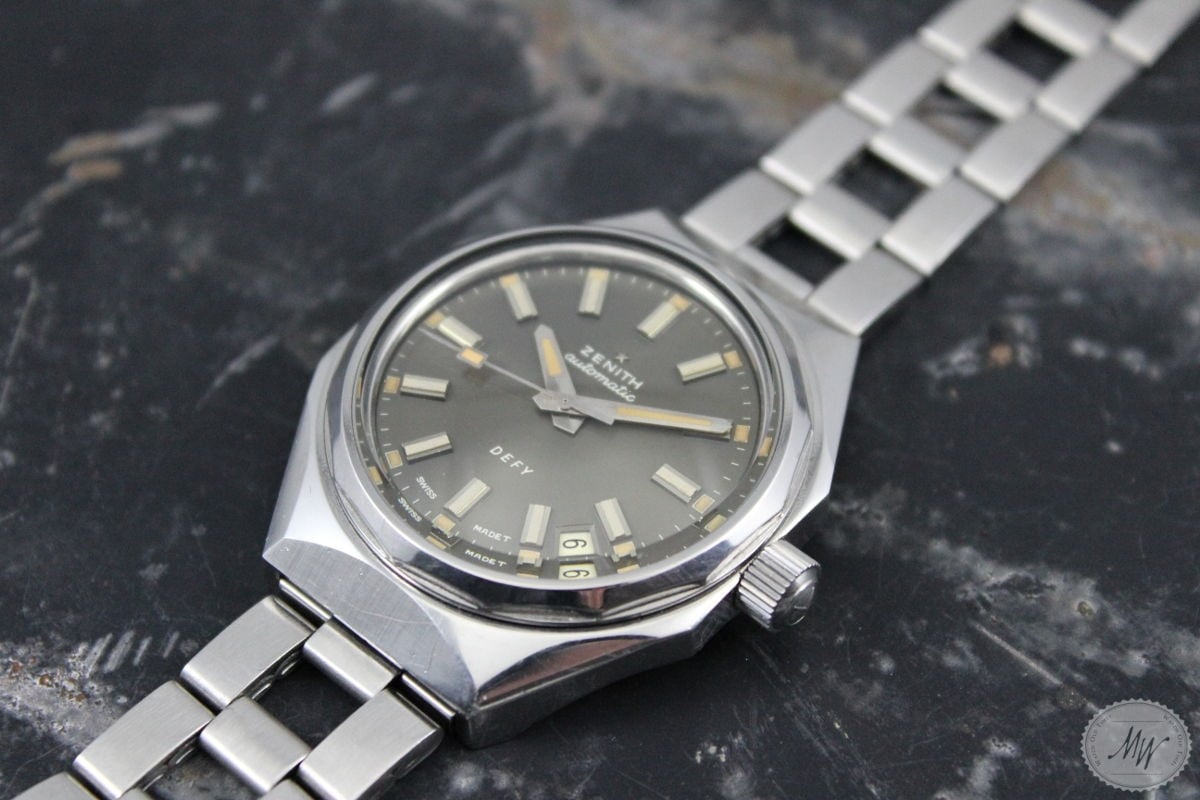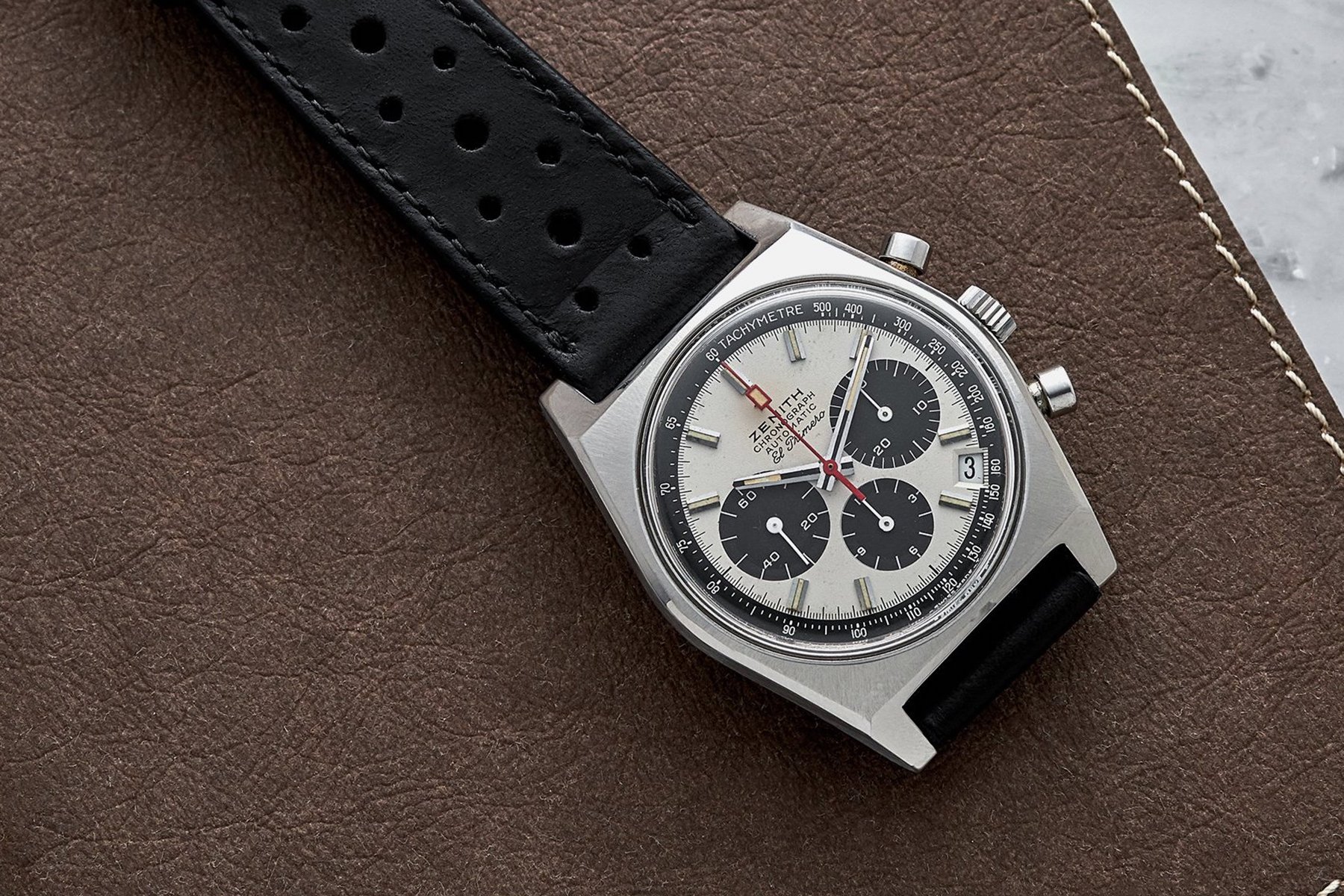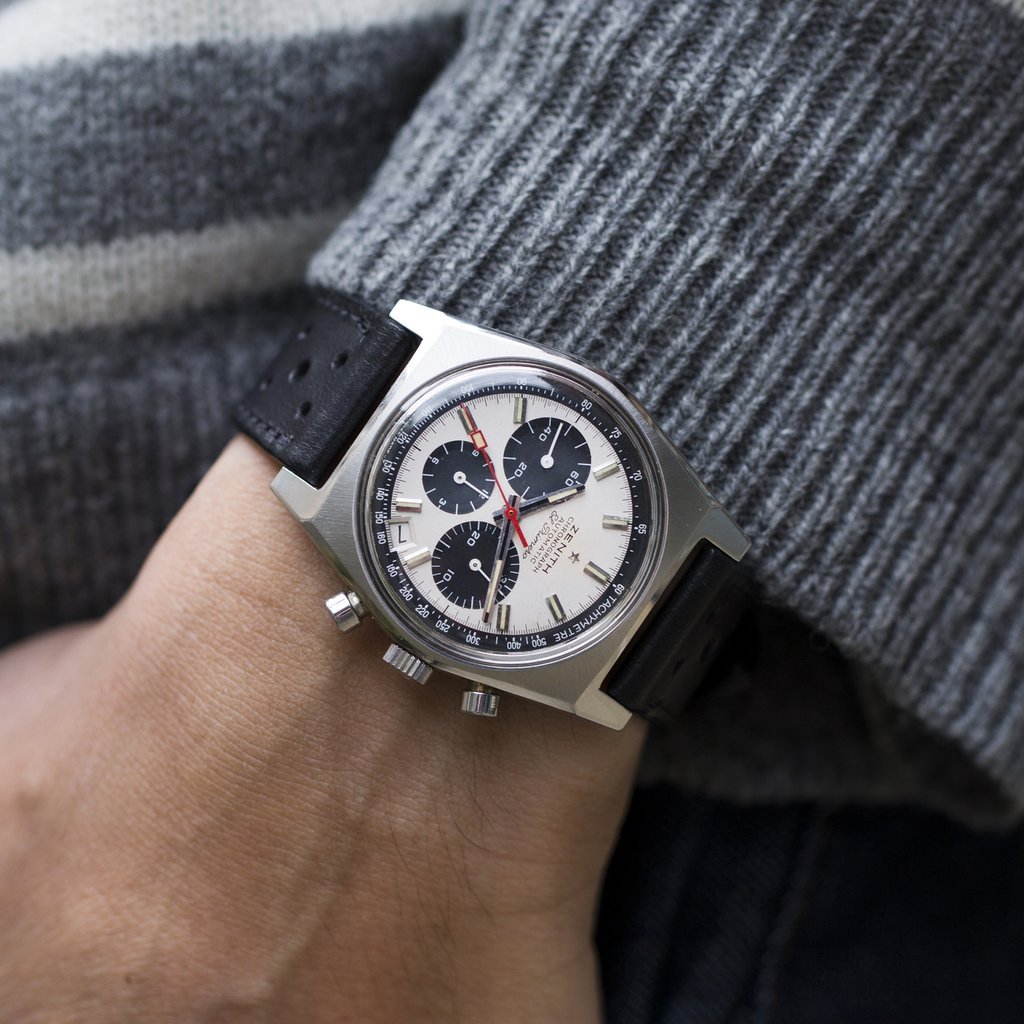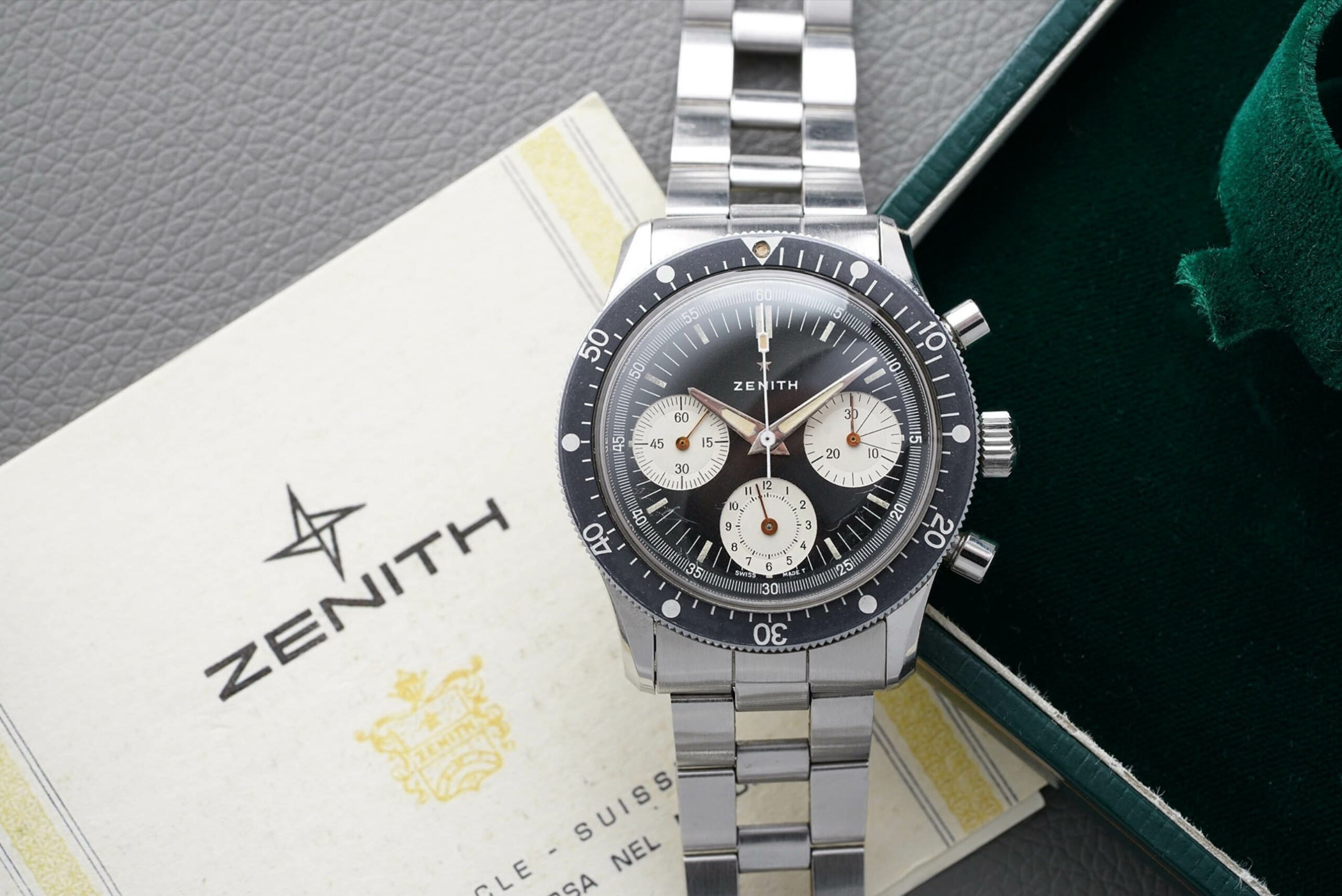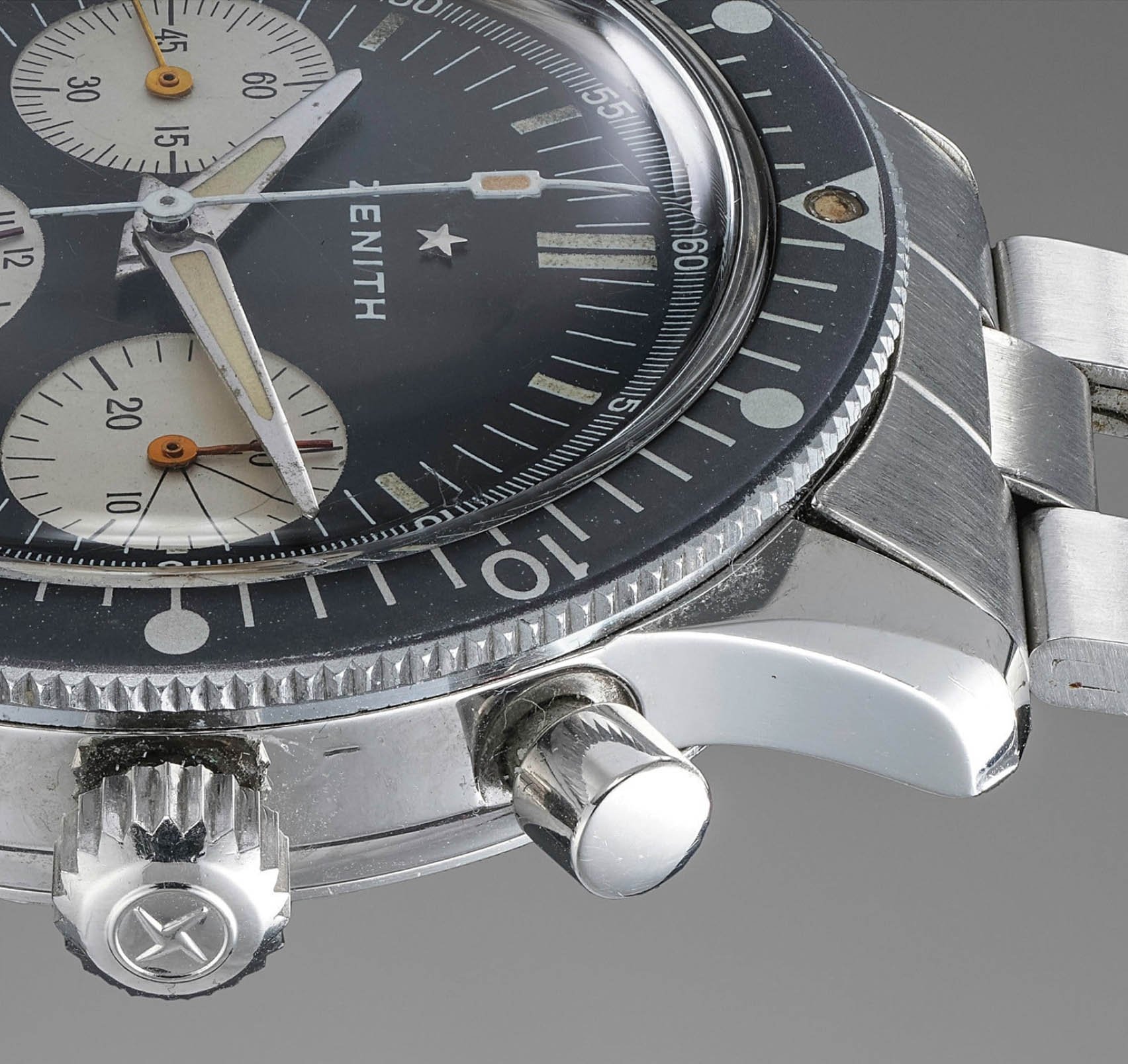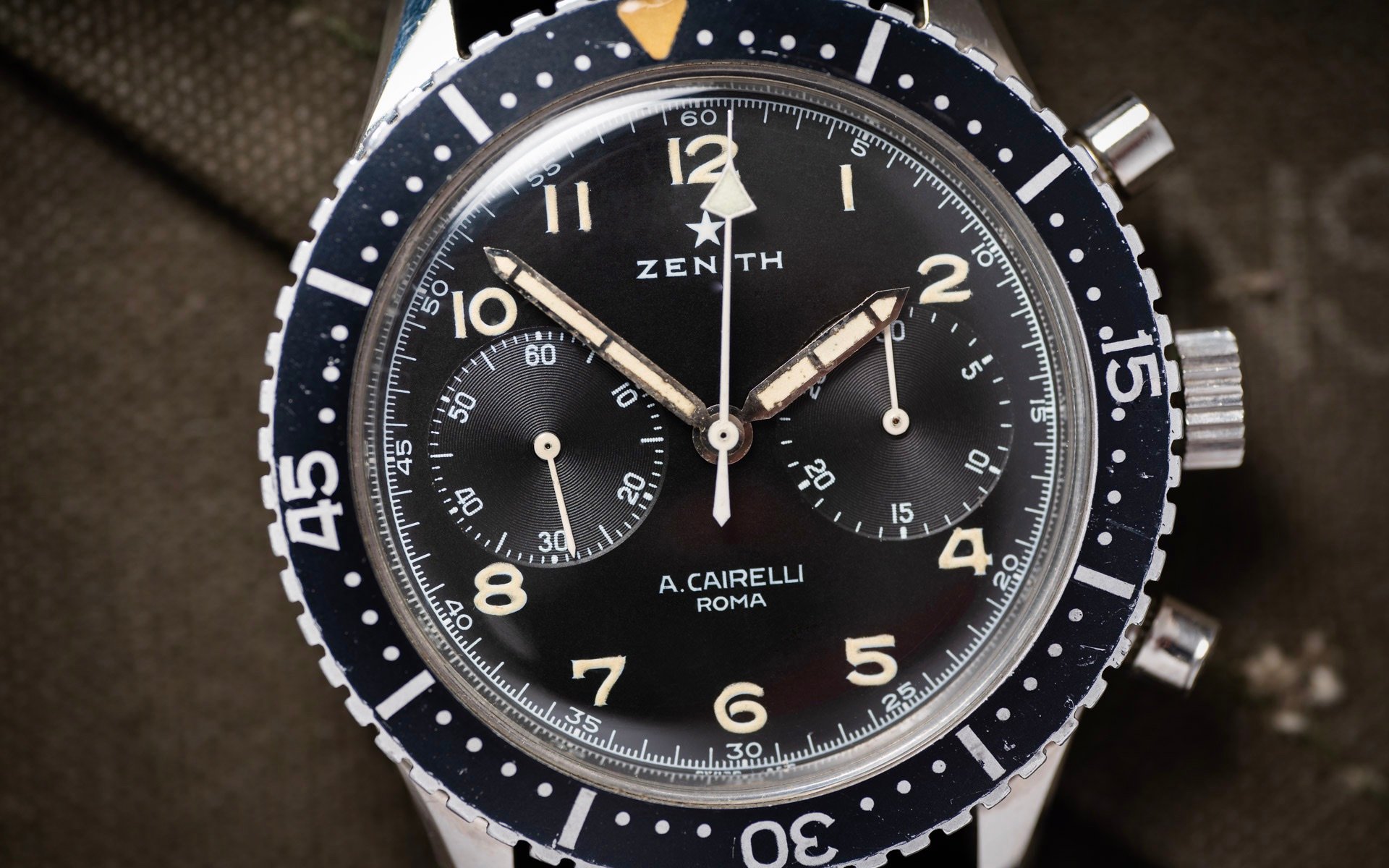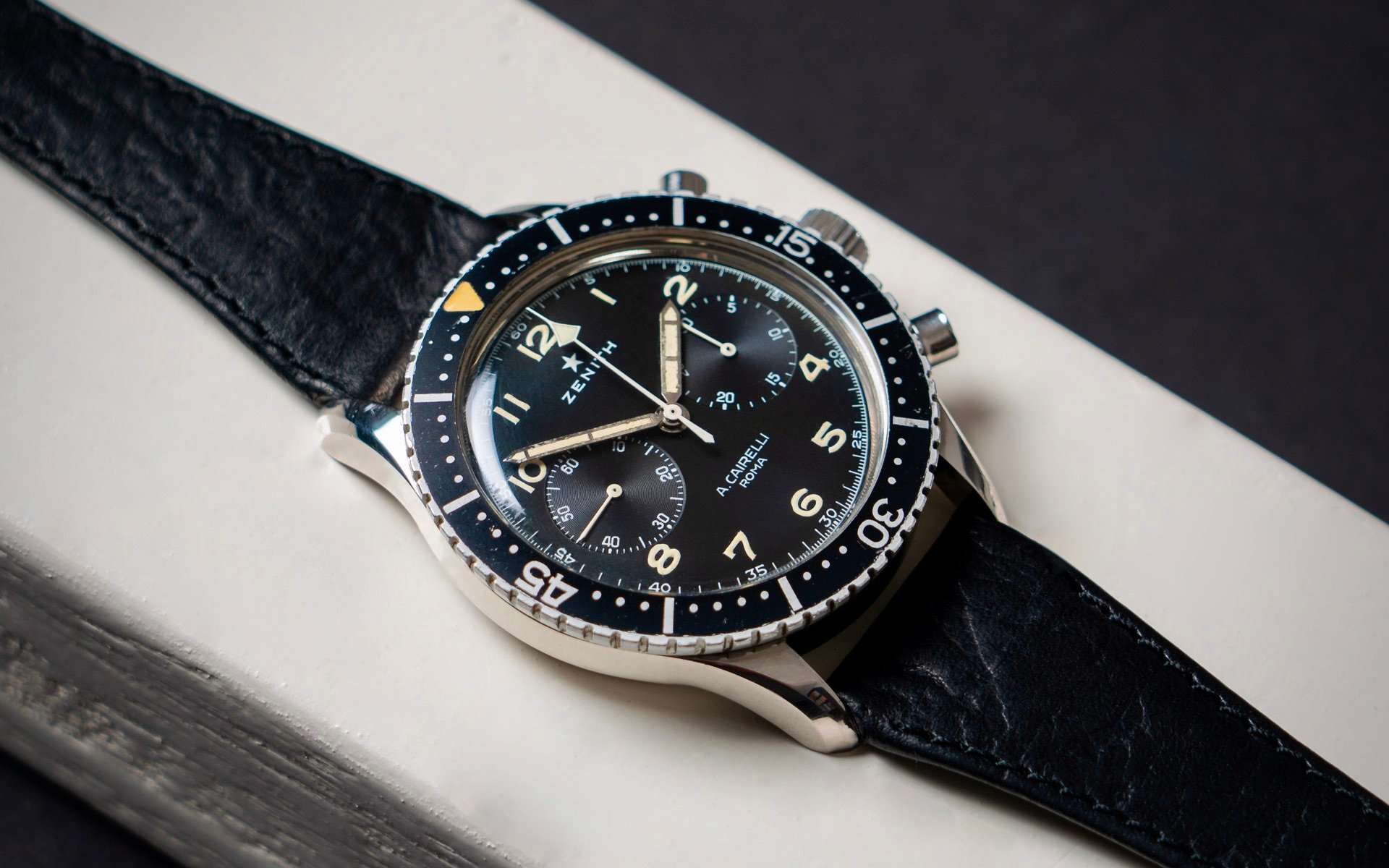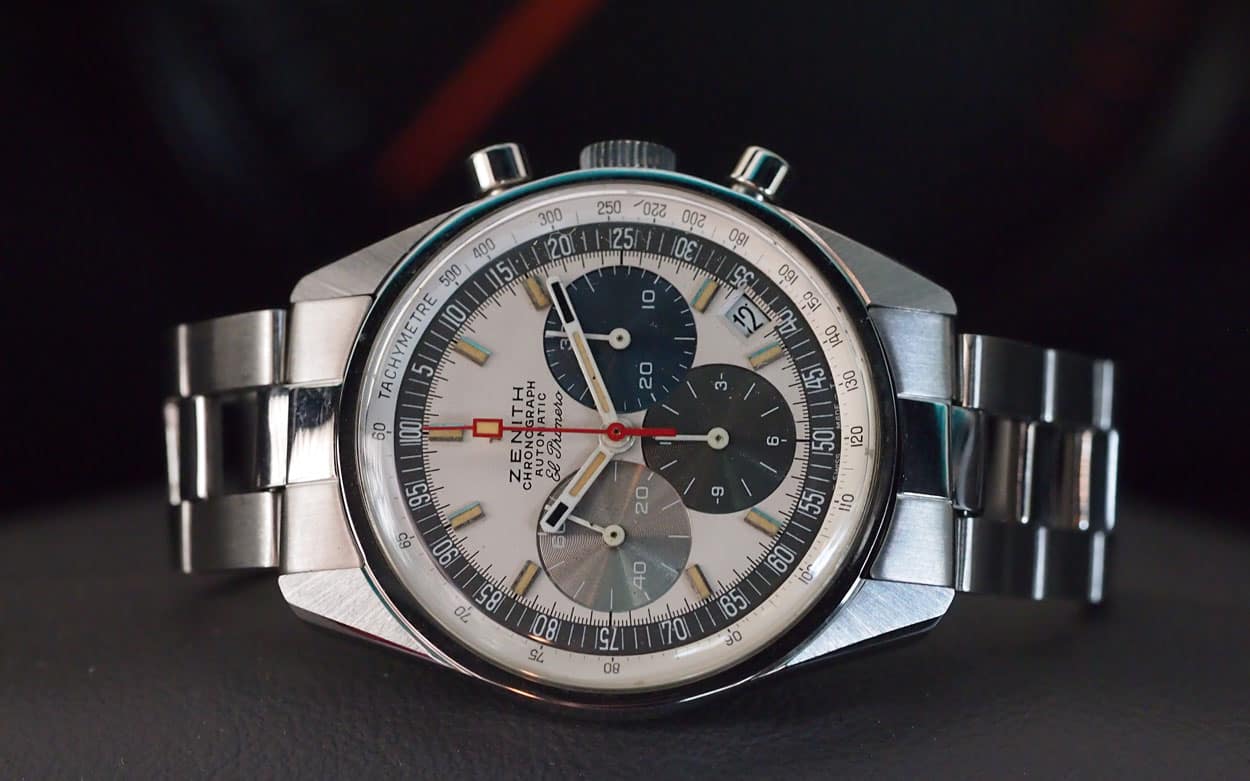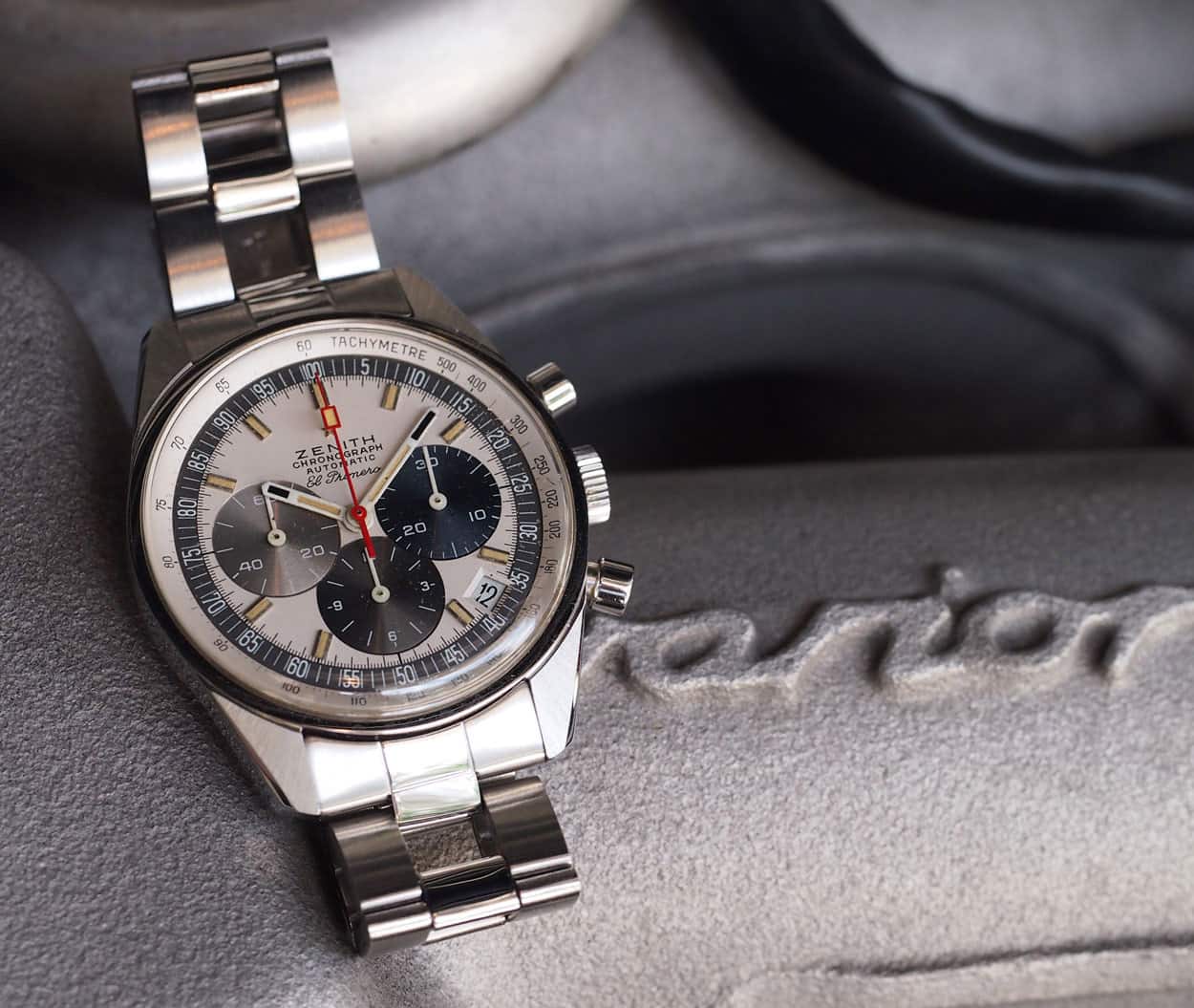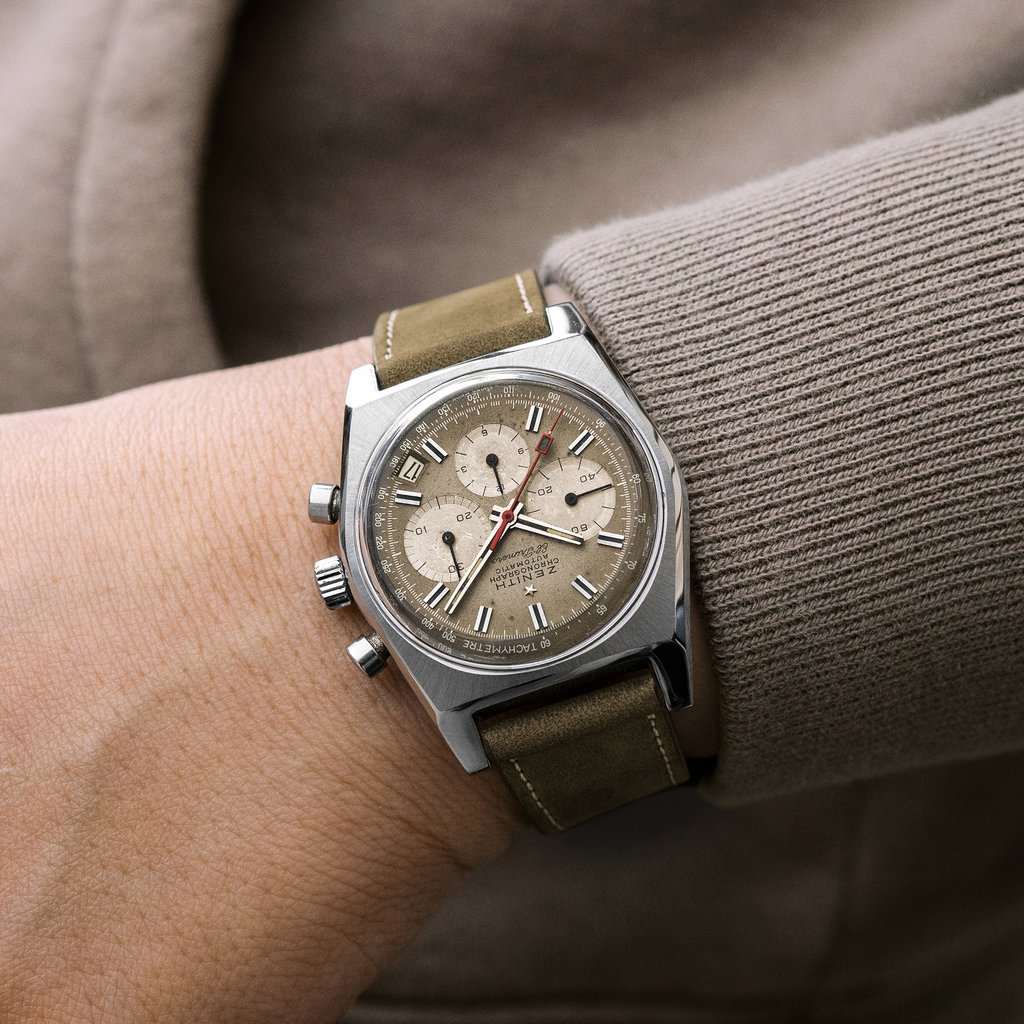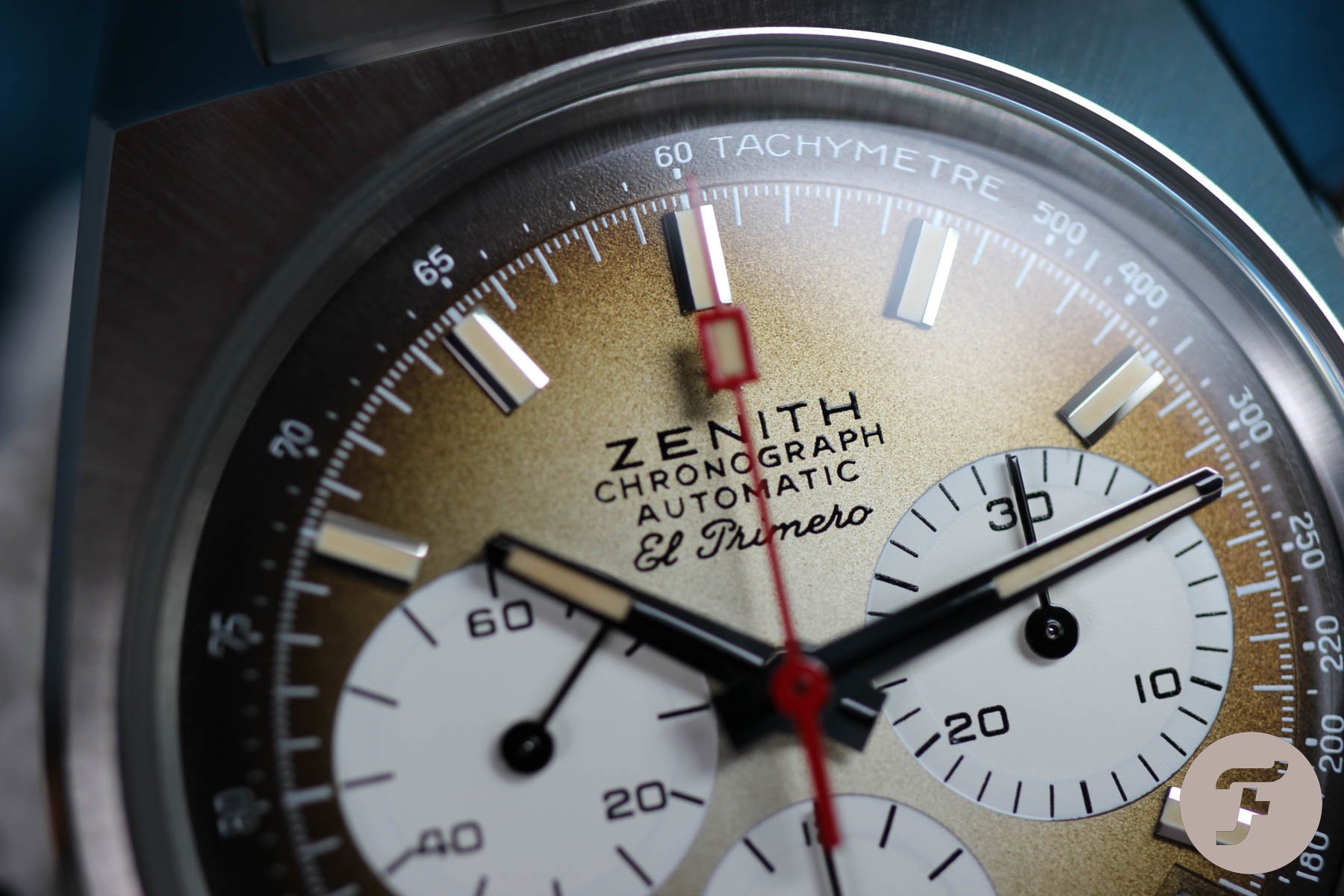Buying Guide: The Best Zenith Watches From The 1960s
We like to talk about vintage watches a lot within the Fratello team. While the daily routine is largely focused on the most recent developments in the world of watches, the most fun for many of us lies in the world of vintage watches. It’s a world full of history, remarkable watches, incredible stories, and quirky details. It inspired us to come up with a series of articles focusing on the best watches per decade from a select group of brands. Some of them priceless, some of them still affordable. But all of them are interesting watches. In this installment, we will take a look at the best Zenith watches from the 1960s.
In the 1960s, we witnessed developments that challenged the status quo of watch design forever. While the 1950s introduced the sports watches next to the dressier timepieces people were used to, the 1960s took that trope to the extreme. The sheer amount of watches that pushed the visual boundaries of what was known and accepted was enormous. On top of that, we also saw great technical developments with the race to produce the first automatic chronograph as the most significant of the decade. In this installment of our series, we will be taking a look at Zenith. A brand that was very much part of the race to come up with the first automatic chronograph. In my opinion, they released the most impressive movement out of all of them with the El Primero that was introduced in January 1969. But there is more to this story.
Zenith in the 1960s
There is no denying that the defining moment for Zenith was the introduction of their famous El Primero movement. But as soon as you start looking into Zenith watches from the 1960s, you’ll quickly find out there is a lot more to the story. When you look at the designs of the Le Locle brand in the 1960s, it’s familiar development, as we know from other brands.
For the greater part of the decade, the brand released classically styled dress watches and chronographs. The second part of the 1960s is where it really gets interesting. And when it comes to Zenith, it’s where it really gets wild as well. I absolutely love seeing the extravagant Zenith models from the 1960s. On top of that, you will also find out that quite a few of the familiar Zenith names find their beginning in the sixties. So without further ado, let’s find out what some of the best of the brand under the star is.
The entry-point — Zenith Defy A364x
A great example of the remarkable designs is the first generation Zenith Defy that was introduced in 1969. The Defy name is actually still part of the brand today. Fratello’s own Gerard actually owns a current titanium Zenith Defy Classic, and while it’s a great watch, it does look different from the first generation Defy. This first generation is a diver’s watch characterized by its 37mm octagonal case that looks absolutely amazing. In 1969 the watch had a water resistance of 300m, and Zenith introduced it in a series of different dial colors that made it a rather spectacular watch.
The Zenith Defy ref. 364x that came out in 1969 was defined by a 37mm octagonal case that is also known as the “Miura” case. It’s a spectacular case shape that showed how much potential octagonal shapes have. Its 37mm size combines with a 45mm lug-to-lug make this a great watch to wear even today. Besides the remarkable case, you will also see that the watch has a matching bezel that completes this angular but still exquisite overall looks.
Their great dials further characterize the watches. A total of five different dial executions was released initially. A white (A 3642) and khaki dial with chunky markers and a white (A 3643), brown (A 3644), and black (A 3645) — actually the rarest — with elongated markers. While the thick markers are definitely more characteristic, I prefer the regular-style markers. The regular markers make sure it’s not too defined by its time and, on top of that, give more focus to the unique case shape.
It’s a case of polishing
The first-generation Defy was powered by the automatic Zenith Caliber 2552PC. It’s a movement that operates at 21,600vph and has a power reserve of 46 hours. It also features a date window placed between the 4 and 5 o’clock markers. In the early 1970s, Zenith updated the movement to the 2562 and updated the dials by including the 28,800 ticking speed on the dials. It stayed in production until 1975. The first-generation Defy was available on the iconic Gay Frères leader bracelet, making it a rather spectacular watch to see. While many of the ladder bracelets have not survived the last five decades, the watch also looks stunning on a leather strap. It gives the case shape even more room to shine.
Finding an original Zenith Defy from 1969 is possible. And you will be surprised how affordable they still are. But the condition of the watch is absolutely key, especially with a case like this. As you will understand, an unpolished case is crucial in bringing out the best of the design. Over time, many of the cases fell into the hands of overenthusiastic watchmakers that often ruined the unique shape. And there are also quite a few with non-original dials. That’s why it is important to take your time to find a model in its original condition. Prices for a Defy start at roughly 600-700 Euros and move up to roughly 2K for one in great condition. It does buy you a unique design that was ahead of its time when it comes to recognizing the potential of octagonal shapes.
My Choice — Zenith El Primero A384
My pick for this list was easy. The Zenith El Primero A384 is one of my favorite watches ever created. It is part of the iconic El Primero trilogy that was introduced in 1969 and featured the revolutionary El Primero movement. Out of the El Primero A384, A385, and A386, this is my absolute favorite. While the preference of the A384 over the A385 is a matter of dial preference, the A386 has its own unique and characteristic design that watch collectors generally favor — we’ll get to that watch in a bit. But my favorite is the A384 by a mile. But that took some time.
It wasn’t exactly love at first sight with the A384. As I explained in an article about my favorite case designs, the A384 features a 37mm blocky case design that for a long time felt a bit too simple and stuck in that realm of late ’60s and early ’70s designs. But as time passed, I started loving the highly effective and rather simple lines. They create a great canvas for the dial, hands, and pushers to shine.
The silver panda dial with the black sub-dials and a black outer ring that holds that tachymeter scale is simple but highly effective. The sub-dial at 6 o’clock is slightly smaller that creates a nice dynamic. The central red chronograph hand is a nice splash of color that stops the dial from becoming boring. And the A384 looks amazing on both the iconic ladder bracelet as well as a leather strap.
A rather rare sighting
Inside the 37mm case, you will find the first generation El Primero movement. It’s a well-known story that Zenith started the development of their automatic chronograph movement in 1962. The goal was to have it ready in 1965 at the brand’s centenary of the manufacture. It took a bit longer, and in January of 1969, the brand introduced its fully integrated high-frequency automatic chronograph movement code named 3019 PHC Calibre. The movement operated at 36,000vph, featured 31 jewels and a 50-hour power reserve. Because of its high 5hz frequency, the movement permitted measurements to the tenth of a second
Finding a Zenith El Primero A384 can be challenging. Not because they are not out there. Supposedly a total of 2,600 pieces were produced between 1969 and 1972. It’s not a huge number, but you will always see a few on offer on different platforms quite regularly. But finding one in good condition is quite a challenge. Prices for an El Primero A384 have risen quite a bit over the years and currently start at roughly 10K. A piece in good condition will set you back 15K-20K, which quite a large chunk of change. I have to give Zenith credit for re-creating their iconic A384 in 2019 and keeping its original size and details. While it is an absolutely brilliant re-edition, the true story obviously starts with the original. It’s hard to beat that initial brilliance of the El Primero A384.
Money is no object #1 — Zenith Chronograph A277
A watch that is very popular with Zenith and chronograph collectors is the Zenith Chronograph A277. And by looking at it, you will probably understand why. This watch has everything that makes 1960s chronographs incredibly attractive. Zenith introduced the A277 in the 1960s and produced two different versions that featured the same design but differed in details. They both feature a 40mm steel case that is 14.5mm thick and has a lug width of 22mm. The A277 also came on the Gay Frères ladder bracelet as so many Zenith watches at the time.
When it comes to the differences, we have to zoom in a bit closer. The first version featured non-luminous seconds hands, blued-steel sub-dial hands, and a five-point star on the crown. The second version is the one I prefer, and it’s the one you see pictured. It came with a luminous seconds hand, gold-colored sub-dial hands, and a four-point star on the crown. As you can see, the gold-colored hands add just that little bit of zing that makes this an absolute joy to watch and makes it a bit more lively than the first version. What I absolutely love is that there is no unnecessary text on the dial. It features the logo with the star and ‘Swiss made,” and that’s it. It makes the A277 an absolute 1960s beauty.
Many faded bezels
Zenith equipped the first version of the A277 with the manual wind caliber 146H. After some time, the brand upgraded the movement to the caliber 146HP. In 1960 Zenith acquired Martel Watch Co. — although there is debate whether it was 1958, 1959, or 1960 — making sure that it could produce chronograph movements “in-house.” The Caliber 146 was one of those movements produced in-house. But it is actually a family of movements that stood out because of its solid construction. On top of that, it was easy to produce in different sizes. The difference between the caliber 146H and 146HP was a series of improvements that Zenith made. The A277 actually shares the caliber 146 with the Movado Super Sub Sea Chronograph from the same era. Zenith and Movado worked closely together and eventually formed a conglomerate under one ownership in 1969 until the early 1980s.
When it comes to finding a Zenith A277, you generally do not have to look far. But you will soon find out that quite a few of them have not stood the test of time very well. One of the things you see most is a faded bezel which definitely gives it a certain charm but is far from ideal. Prices for a Zenith A277 start at roughly 4-5K for a beat-up version. If you would like a piece in better condition, expect to pay closer to 10K, and pieces in pristine condition — that you only see on offer once in a while — easily fetch around 15K. But what you get in return is a classy statement from the 1960s. And the second version adds a little colorful twist that makes it even better.
Money is no object #2 — Zenith A. Cairelli CP-2 Chronograph
Another famous Zenith chronograph from the 1960s is the Zenith A. Cairelli CP-2 Chronograph that the brand produced for the Italian Air Force. Leave it up to the Italian military to order watches from some of the best watch companies. Breitling, Panerai, Universal Genève, and Zenith all supplied the Italian forces with some legendary watches sought-after by collectors. And with this Zenith A. Cairelli Chronograph, it’s no different. The watch gets its name from the Roman retailer A. Cairelli who supplied the watches to the Italian Air Force during the sixties.
The story goes that 2,500 pieces of the watch were produced in that period of time. As the Italian army ordered more pieces that they actually distributed to their personnel, an unknown number of pieces were sold to the public. It probably comes as no surprise that the ones with military markings are the ones that are the most in-demand. The Zenith A. Cairelli CP-2 is a typical military pilot’s chronograph in its appearance. It resembles the iconic Heuer Bund chronographs that I discussed last week in the best of Heuer from the 1960s article.
Popular amongst collectors
The watch features a 43mm stainless steel case with a black dial and two large registers, tritium-coated Arabic numerals, and the A. Cairelli name on the dial. Furthermore, it was equipped with a characteristic graduated revolving black bezel. Tritium-coated baton hands were used for the hands and minutes. A nice detail is the central chronograph hand that was shaped like a miniature airplane. Inside the case, you will find the manual wind Zenith caliber 146DP. In essence, it’s the same movement that was used for the A277 that we discussed before. The main difference is that this features two registers, indicated by the “D” whereas the A277 features three registers, indicated by the “H” in the movement reference.
Because of its 43mm size, iconic looks, and great historical story, the Zenith A. Cairelli CP-2 Chronograph is a favorite amongst Zenith and chronograph collectors. It made Zenith decide to create a re-issue of the original back in 2016 under the name Zenith Heritage Cronometro TIPO CP-2. While it still looks the part, that watch doesn’t feature a manual wind caliber but an El Primero movement. On top of that, it misses the A. Cairelli name on the dial. And it’s these two elements that contribute greatly to the legacy of the original watch. It’s actually not that hard to find a Zenith A. Cairelli CP-2 Chronograph. Prices start at roughly 10K and move up to 15K and over for a piece in great condition. That money does buy you an iconic chronograph with a great story.
Money is no object #3 — Zenith El Primero A386
The last watch on our list is the iconic Zenith El Primero A386. It is the brand’s most iconic watch and for a good number of reasons. After introducing the El Primero movement, the brand pushed the A384 as the first in ads out of the three watches that make up the El Primero trilogy. But production numbers have indicated that Zenith started production of the A386 before the A384. The El Primero A386 is a sports chronograph that is truly one of a kind in the industry. Its biggest standout feature is, without a doubt, its unique dial. But it is far too easy to make it all about the dial.
Mike owns a Zenith El Primero A386, and he described in detail what makes the watch so special. It all starts with the 38mm case that actually wears bigger because of its long lugs and slim bezel. On top of that, the profile of the A386 is very slim because of its slim integrated movement. It makes the watch a joy to wear. Once you have it on the wrist the dial is an absolute eye-catcher.
The white dial features a black scale around the applied hour markers that features 100 graduations because the El Primero movement is capable of tenth-of-a-second measurement. While that contrast is nice, the colorful overlapping blue, light grey and anthracite registers are the main attraction for many that love the A386. The date display is neatly tucked away at 4:30. It doesn’t scream that it’s there and when you need it, it’s easy to read. As with the A384, the red central chronograph hand provides an extra splash of color. The neatly proportioned pump pushers and crown finish the iconic looks of the A386.
Larger production numbers
Inside the case, we find the same El Primero movement that powers the El Primero A384 that we discussed earlier. In an incredibly detailed article about the El Primero A386 on Alpha Hands, you will find that Zenith used different engravings on the chronograph bridge as well as the plate for the El Primero Mk1–Mk3 movements. According to Zenith, the brand produced a total of around 4,500 pieces of the A386 between 1969 and 1972. The watch was available on the iconic ladder bracelet or a black leather strap with a pin buckle. It goes without saying the Gay Frères ladder bracelet was the way to go. In the article Mike wrote, he explained that the bracelet not only gives the watch character but it’s also a great quality bracelet reminiscent in some details of the great Rolex Oyster bracelets.
If you are in the market for a Zenith El Primero A386, it will not surprise you that you will need to bring some serious cash. Prices for one start at roughly 14-15K and move up quickly for pieces in better condition. Quite a difference with the 8-10K five years ago when Mike wrote his article. Pieces in pristine condition go for a lot more with auction prices sometimes moving up to 20-30K easily. What you get in return is one of the most iconic and celebrated chronographs in the world.
Money is no object #4 — Zenith El Primero A385
Usually, I stick to five watches in this series of articles. But somehow the list doesn’t feel complete without the third El Primero model that Zenith introduced in 1969. Especially since the brand recently introduced a faithful re-edition of the original watch from 1969. Tomas did a hands-on review of that watch and was very impressed with the new version of this classic. It’s great to see that Zenith finally took the time to honor the third watch in the El Primero trilogy. It’s a watch that is by far not as popular as the other two models. It is believed that only 2,100 pieces were produced between 1969 and 1972.
The original El Primero A385 was essentially the same watch as the A384. It came with the same 37mm cushion-shaped case and the same movement. The one big difference was the dial execution. Where the A384 features a panda dial, the A385 saw the introduction of a gradient smoky khaki or cappuccino-colored dial. The gradient goes from a light cream in the center to a darker true brown near the edge. The white chronograph registers contrast nicely with the background color. As with the other El Primero models, the red central chronograph hand provides a nice bit of color. It’s a different aesthetic that looks brilliant.
The reason to definitely mention the A385 is not just because it’s part of the trilogy. Another reason is that a vintage one is significantly more affordable than the other two El Primero models. If you prefer the funky design over the panda dial, an El Primero A385 can be yours for roughly 6-10K. So it saves you a great sum of cash and you can still enjoy the same iconic design and legendary movement. And that’s worth a lot.
Final Thoughts
There you have it. A list of six remarkable Zenith watches from the 1960s. As always, there are plenty more watches that could have been on this list. I, unfortunately, cannot cover every great watch from the brand. What stands out if you look at these five watches is that Zenith created some amazing watches in the sixties that stood out in both design and technical development.
As with all the other brands, it is important to do your homework. The world of vintage Zenith watches also suffers from fake or Franken pieces. Next to that, you have to keep in mind that many of the vintage pieces were serviced over the decades, and parts have been replaced. That’s why it good to do some required reading.
A lot of crucial historical info has been well documented. Two nice books to start with are Zenith – Swiss Watch Manufacture Since 1865 and El Primero – Der Chronograph (in German), both written by Manfred Rössler. The first book might be hard to find and has become a collector’s item as well. On top of that, there is plenty of information available to read online. Jeff Stein’s On The Dash has a great cheat sheet for all the El Primero models with some nice links. Additionally, the Zenith forum at Watchuseek is also a good place to start. Contacting vintage experts will also help out greatly. It’s a great way to learn more about a watch and get to know some amazing people along the way.
Next week, we will look at some of the best watches from Longines from the 1960s. In the meantime, let us know in the comment section what your favorite Zenith from the 1960s is.

